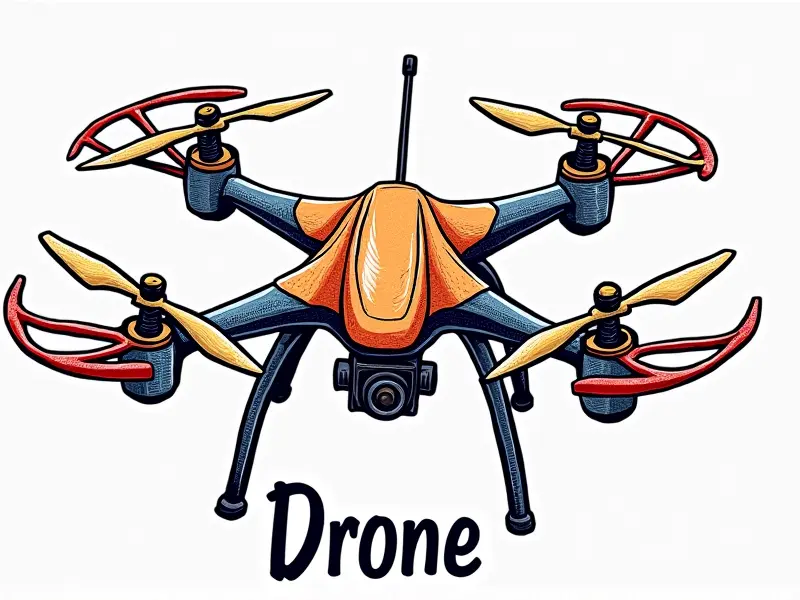How does drone GPS work?

Why Drone GPS Is a Game Changer
Drone GPS technology has revolutionized the way we use unmanned aerial vehicles (UAVs) for various applications, from photography and videography to surveying and mapping. The integration of Global Positioning System (GPS) into drones enables them to navigate with precision and reliability, making it easier than ever before to capture high-quality aerial footage or conduct detailed surveys.
One of the key benefits of drone GPS is its ability to provide real-time location data, allowing pilots to monitor their drone's position accurately. This feature enhances safety by reducing the risk of losing control over the UAV and helps in maintaining legal compliance with airspace regulations.
How Does Drone GPS Navigate?
The navigation process begins when a drone receives signals from multiple satellites orbiting Earth. These signals are used to calculate the drone's exact position, altitude, speed, and direction of movement. By continuously updating this information, the drone can maintain its course or adjust it based on pre-programmed instructions.
Secrets of Drone GPS Autopilot Systems
Autopilot systems in drones utilize advanced algorithms to interpret GPS data and control the UAV's movements autonomously. These systems enable features such as waypoint navigation, where the drone can follow a predefined flight path without manual intervention. Additionally, they support return-to-home functionality, ensuring that the drone safely returns to its starting point if communication is lost or battery levels are low.
Mastering Drone GPS for FPV Racing
First-person view (FPV) racing drones rely heavily on GPS technology to enhance performance and safety during competitions. Pilots use GPS data to optimize flight paths, avoid obstacles, and maintain stable speeds throughout the racecourse. This technology also helps in tracking competitors' positions and improving overall strategy.
Understanding Drone GPS Coordinates
GPS coordinates are essential for determining a drone's location on Earth. These coordinates consist of latitude, longitude, and altitude values that pinpoint the exact position of the UAV. By understanding these coordinates, pilots can plan flights more effectively and ensure they stay within legal boundaries.
The Magic of Drone GPS Navigation
Drone GPS navigation involves complex calculations to determine the most efficient routes for various tasks. This technology not only simplifies flight planning but also enhances operational efficiency by reducing human error and increasing productivity in industries such as agriculture, construction, and environmental monitoring.
Basics of Drone GPS Systems
At its core, a drone GPS system consists of hardware components like antennas and receivers that capture satellite signals. Software algorithms then process this data to provide real-time navigation information. Understanding these basics is crucial for anyone looking to operate drones effectively in various environments.
How Accurate is Drone GPS?
The accuracy of drone GPS varies depending on factors such as signal strength, atmospheric conditions, and the quality of hardware used. Generally, modern GPS systems can achieve accuracies within a few meters, making them highly reliable for most applications. However, advanced technologies like RTK (Real-Time Kinematic) GPS offer even greater precision for specialized tasks.
Drone GPS: Navigating Made Easy
The user interface of many drone GPS systems is designed to be intuitive and easy-to-use, allowing pilots to focus on their primary objectives without getting bogged down by technical details. Features such as automatic takeoff and landing, obstacle avoidance, and intelligent flight modes make it simpler for both beginners and experienced users to navigate complex environments.
Inside Drone GPS Technology Explained
To fully appreciate the capabilities of drone GPS technology, it's important to understand how each component works together. From signal reception through data processing to output display, every step plays a critical role in ensuring accurate navigation and reliable performance.
Mastering Drone GPS for Beginners
For those new to using drones with GPS capabilities, mastering the basics is essential before moving on to more advanced techniques. Start by familiarizing yourself with your drone's user manual and practicing simple flight patterns under controlled conditions. Gradually build up experience as you gain confidence in handling GPS features.
Conclusion
The integration of GPS technology into drones has opened up a world of possibilities for both recreational users and professionals alike. By understanding how drone GPS works, pilots can unlock the full potential of their UAVs and achieve remarkable results across various applications. Whether you're an FPV racer looking to optimize your performance or a surveyor aiming to conduct precise measurements, mastering drone GPS is key to success in today's aerial landscape.

